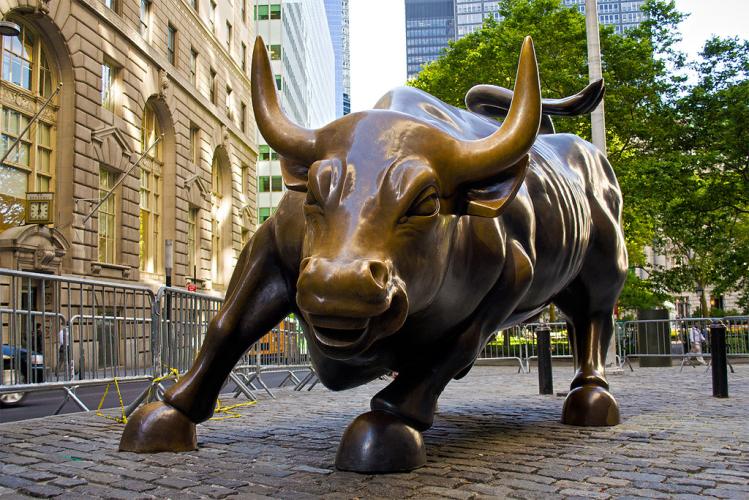
Ten years ago this fall, the global economy was on the brink of collapse. The failure of the investment bank Lehman Brothers set off a credit crisis that led to the longest and deepest recession since the 1930s. Before it was over, 9 million Americans had lost their jobs, and about as many had lost their homes. Technically, the U.S. economy began to recover the following year, but it would take most of the next decade for it to make up all the ground it lost in eighteen months.
One would like to believe all that is behind us now and Wall Street has learned its lesson. The headline numbers all indicate that the economy is thriving. The Gross Domestic Product is growing at an annual rate of more than 4 percent; unemployment is down to 3.9 percent, the lowest it’s been since the 1960s; the stock market and corporate profits continue to soar. Meanwhile, the biggest banks—those judged too big to fail—hold twice as much capital as they did before the financial crisis. They must now undergo regular stress tests to prove that they can weather another crisis. In case they can’t, they must also have “living wills”—plans for an orderly bankruptcy that will (in theory) keep their failure from destabilizing the whole financial system.
Nevertheless, there are good reasons to worry. As David Leonhardt of the New York Times has pointed out, those headline numbers don’t tell the whole story. Yes, the unemployment rate is low, but only because it doesn’t count all those who might want a full-time job but have given up looking for one. Today, nearly 15 percent of men between the ages of twenty-five and fifty-four, including those who have dropped out of the labor market, are not working—a number far more important than the official unemployment rate. Yes, the stock market has gone from strength to strength, but the richest 10 percent of Americans own 84 percent of all stock, and half of American households own none. More important, the median household’s net worth is still about $40,000 lower than it was when the housing bubble burst. Yes, the economy is growing at an impressive rate, but the fruits of that growth have all gone to the top earners. The real median earnings of full-time workers went down last year by 1.1 percent. In short, our standard indicators of prosperity have allowed the staggering wealth of a few to obscure the fact that too many Americans are still struggling.
Some economists believe that growing inequality was among the causes of the financial crisis, as consumers made up for their stagnant wages by borrowing more and saving less, thus creating a credit bubble. What’s certain is that, ten years after the crisis, inequality remains a serious problem. The Treasury Department’s $700 billion bank bailout may have saved the system, but it also saved financiers and investors from suffering the consequences of their collective folly. Less mercy was shown to those on the other side of the reckless lending, the millions of low- and middle-income Americans who could no longer keep up with their mortgage payments. Quantitative easing—the Federal Reserve’s technique of creating money to buy back government bonds—may have kept the recession from becoming a full-blown depression, but it also had the predictable effect of inflating the prices of financial assets owned mainly by the wealthy.
For its part, Wall Street is doing its best to forget whatever lesson it learned. Banking lobbyists are working to scuttle key provisions of the Dodd Frank Act, which was designed to curb the riskiest kinds of financial speculation and to protect consumers from predatory lending. In May a bill that relaxes regulation for twenty-five of the nation’s thirty-eight largest banks passed Congress with bipartisan support. Worse, the Trump administration is quietly using its regulatory agencies to ease capital requirements for the very largest banks and to hollow out the Volcker Rule, which prohibits banks from speculating with their depositors’ money. On the campaign trail, Trump ran against Wall Street, bragging he was rich enough not to need its support, but since taking office he has consistently done its bidding.
Sooner or later there will be another crisis and, once again, those hit hardest won’t be bank executives, but working-class Americans who struggle to get by even when markets are roaring. We can also be fairly certain that if bank failure should ever again threaten to sink the entire economy, there will another round of emergency bailouts: duresse oblige. In the meantime, however, we should not be hastening the next crisis with deregulation, or cutting taxes for financiers and investors while everyone else falls further behind. Any politician who believes that Washington has been too hard on Wall Street is mistaken, and should be firmly corrected by voters this November.
